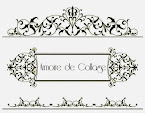Sunday, April 17, 2011
Faberge' Eggs...A Royal Tradition
The tradition of giving a present of an egg at Easter could very well have started when the Russian Czar, Alexander III, decided to give his wife, the Empress Maria Fedorovna, an Easter egg in 1885. It’s thought that it was possibly to commemorate the 20th anniversary of their betrothal. Empress Maria was so delighted by the gift that Alexander appointed the goldsmith, Peter Carl Fabergé, by special appointment to the Imperial Crown. He commissioned another egg the following year, but after that, Fabergé was given artistic freedom for the design of future Imperial Easter Eggs. According to Fabergé family history, not even the Czar knew what they would look like; the only stipulation was that each egg should contain a surprise. The most famous eggs produced by the House were the larger ones made for Alexander III and Nicholas II of Russia. Unfortunately of the 50 that were made, only 42 survived.
The "Fabergé egg" has become synonymous with luxury and beauty, and regarded as masterpieces of this jeweler's art. The eggs were made of precious metals and decorated with enamel and precious gems. Fabergé and his team of team of expert craftsmen were especially noted for their exquisite enameling technique which is still considered the finest in the world and of the highest caliber. The technique of enameling is an extremely delicate one involving firing the enamel (a compound of glass and metal oxides) at very high temperatures. Often their enameled objects combined different colors of enamel making it necessary to individually fire the different colors at different temperatures. Their extensive range of enamel colors numbered up to 150 different shades.
In the enameling process, enamel is applied by fusion to a metallic surface. For enamel to become soft so that it can be applied to a metal surface it must be heated to a high temperature; the finest translucent enamel is heated to approximately 600 degrees centigrade. The House of Fabergé often fired enamel at temperatures that ranged up to 800 degrees centigrade. Extremely high temperatures could cause defects and imperfections in the enamel, therefore, Fabergé personally inspected every article and any imperfect objects were discarded.
The perfect smoothness of the surface is a distinct Fabergé enameling characteristic. The pieces were devoid of imperfections or dimples. Fabergé perfected the challenging technique known as en ronde bosse…enameling on curved surfaces. It is most difficult to achieve and allows for no margin of error. But most noteworthy, and a signature trademark, was the Fabergé enamel technique referred to as guilloché. Enamel guilloché is the pleasing effect that is achieved when translucent enamel is applied over an engraved design on a metal surface using a machine known as a tour à guilloché. Using this turning device, a variety of patterns called guilloché patterns could be engraved in the surface of the metal. Among the most beautiful are the moiré, sunburst, and basket weave designs. Over these patterns as many as 5 to 6 layers of enamel would be applied and fired individually.
As if the enameled eggs weren’t beautiful enough, they were often decorated with gold and precious gems. The individual eggs also had distinctive embellishments that might include cameos, jasperware, small figurines mounted on them, or hand-painted porcelain, family portraits. Each egg was a one-of-a-kind and a miniature work of art. To see what remains of the Romanov’s Fabergé egg collection and other breathtaking Fabergé creations, you would have to view the catalog from the exquisite Fabergé exhibition that toured globally titled Fabergé: Imperial Jeweler, compiled by Géza Von Hapsburg and Marina Lopato.
See related article titled “Eggsactly What I Wanted” at http://bit.ly/2ekJKq1 on this same blog.)
Subscribe to:
Post Comments (Atom)





No comments:
Post a Comment